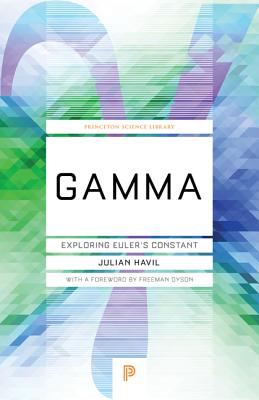

 Princeton University Press
Princeton University Press
Gamma: Exploring Euler's Constant


Key Metrics
- Julian Havil
- Princeton University Press
- Paperback
- 9780691178103
- 8.4 X 5.5 X 0.9 inches
- 0.65 pounds
- Mathematics > History & Philosophy
- English
 Secure Transaction
Secure TransactionBook Description
Among the many constants that appear in mathematics, π, e, and i are the most familiar. Following closely behind is y, or gamma, a constant that arises in many mathematical areas yet maintains a profound sense of mystery.
In a tantalizing blend of history and mathematics, Julian Havil takes the reader on a journey through logarithms and the harmonic series, the two defining elements of gamma, toward the first account of gamma's place in mathematics.
Introduced by the Swiss mathematician Leonhard Euler (1707-1783), who figures prominently in this book, gamma is defined as the limit of the sum of 1 + 1/2 + 1/3 + . . . Up to 1/n, minus the natural logarithm of n--the numerical value being 0.5772156. . . . But unlike its more celebrated colleagues π and e, the exact nature of gamma remains a mystery--we don't even know if gamma can be expressed as a fraction.
Among the numerous topics that arise during this historical odyssey into fundamental mathematical ideas are the Prime Number Theorem and the most important open problem in mathematics today--the Riemann Hypothesis (though no proof of either is offered!).
Sure to be popular with not only students and instructors but all math aficionados, Gamma takes us through countries, centuries, lives, and works, unfolding along the way the stories of some remarkable mathematics from some remarkable mathematicians.
Author Bio
Julian Havil is the author of John Napier: Life, Logarithms, and Legacy; The Irrationals: A Story of the Numbers You Can't Count On; Impossible? Surprising Solutions to Counterintuitive Conundrums; Nonplussed! Mathematical Proof of Implausible Ideas; and Gamma: Exploring Euler's Constant (all Princeton). He is a retired former master at Winchester College, England, where he taught mathematics for more than three decades.
Source: Princeton University Press
Videos
No Videos
Community reviews
Write a ReviewNo Community reviews